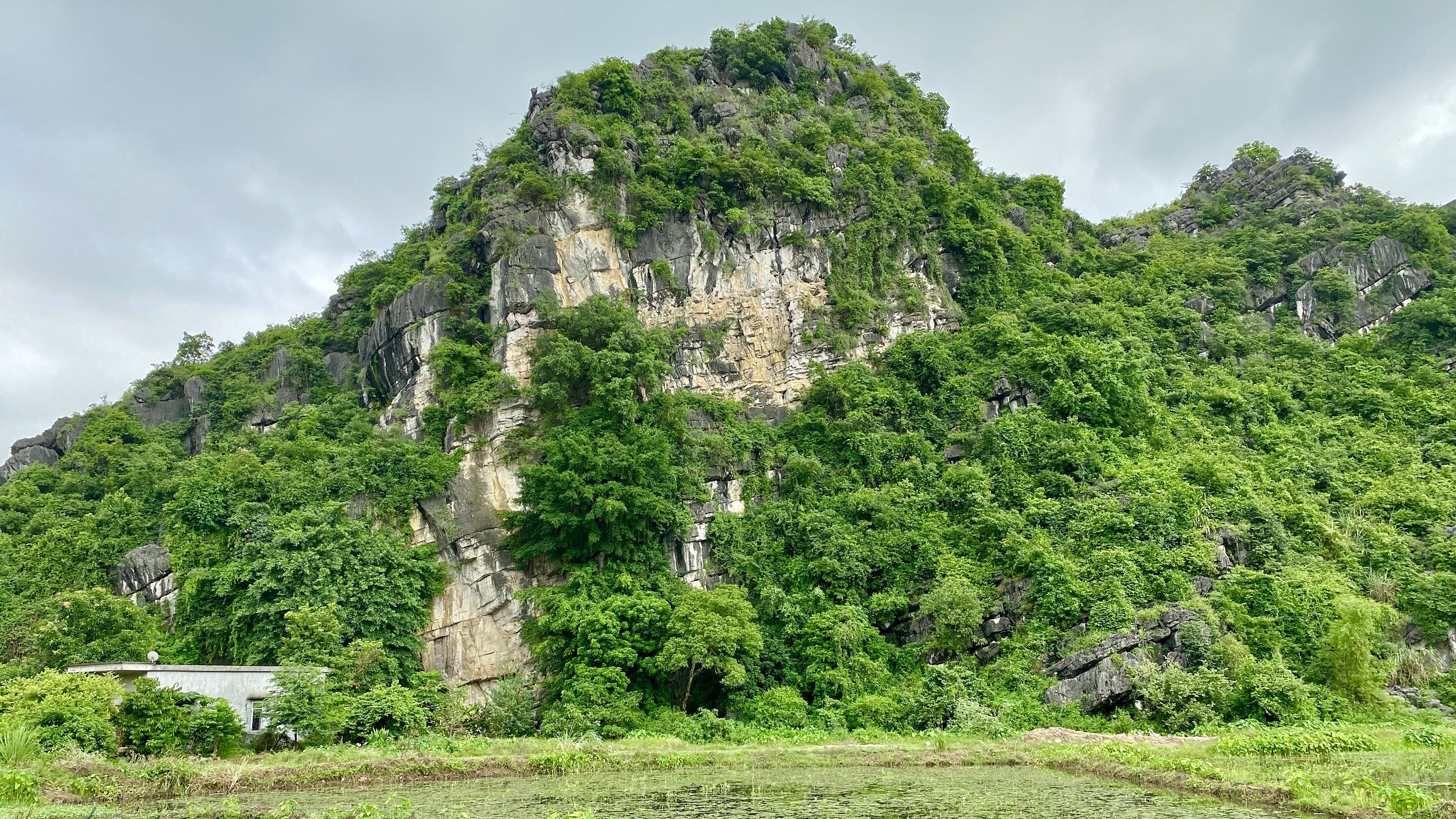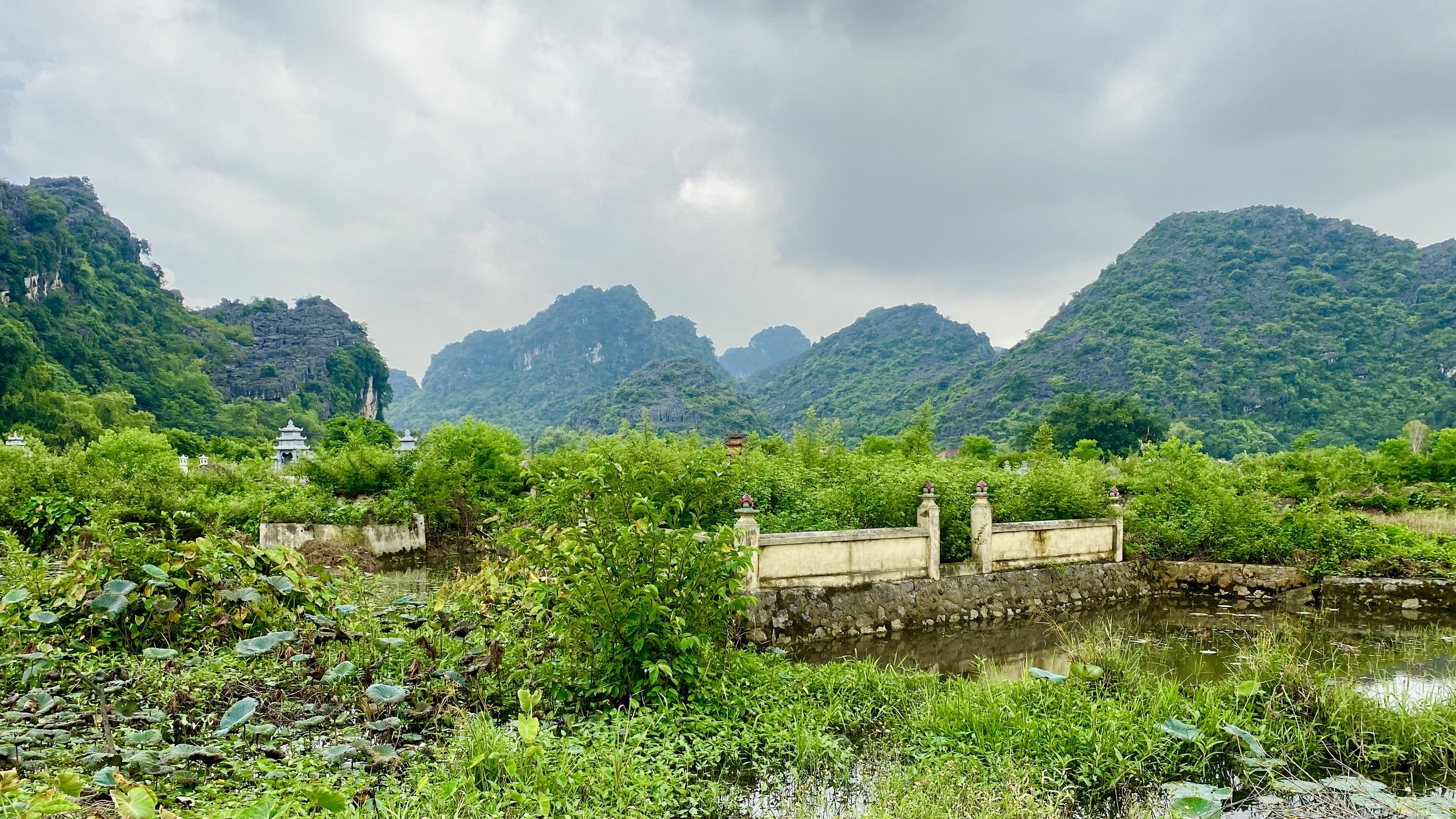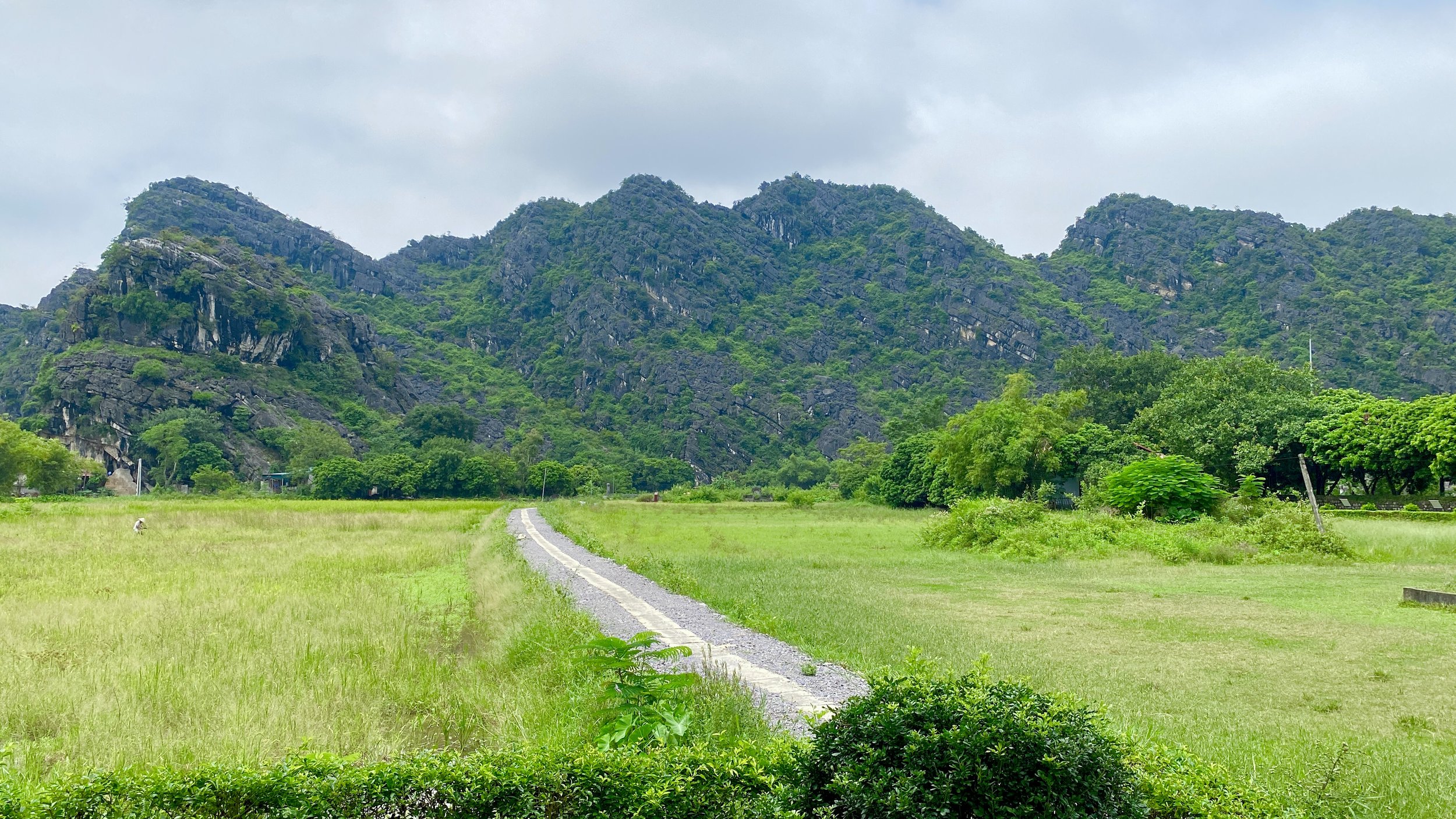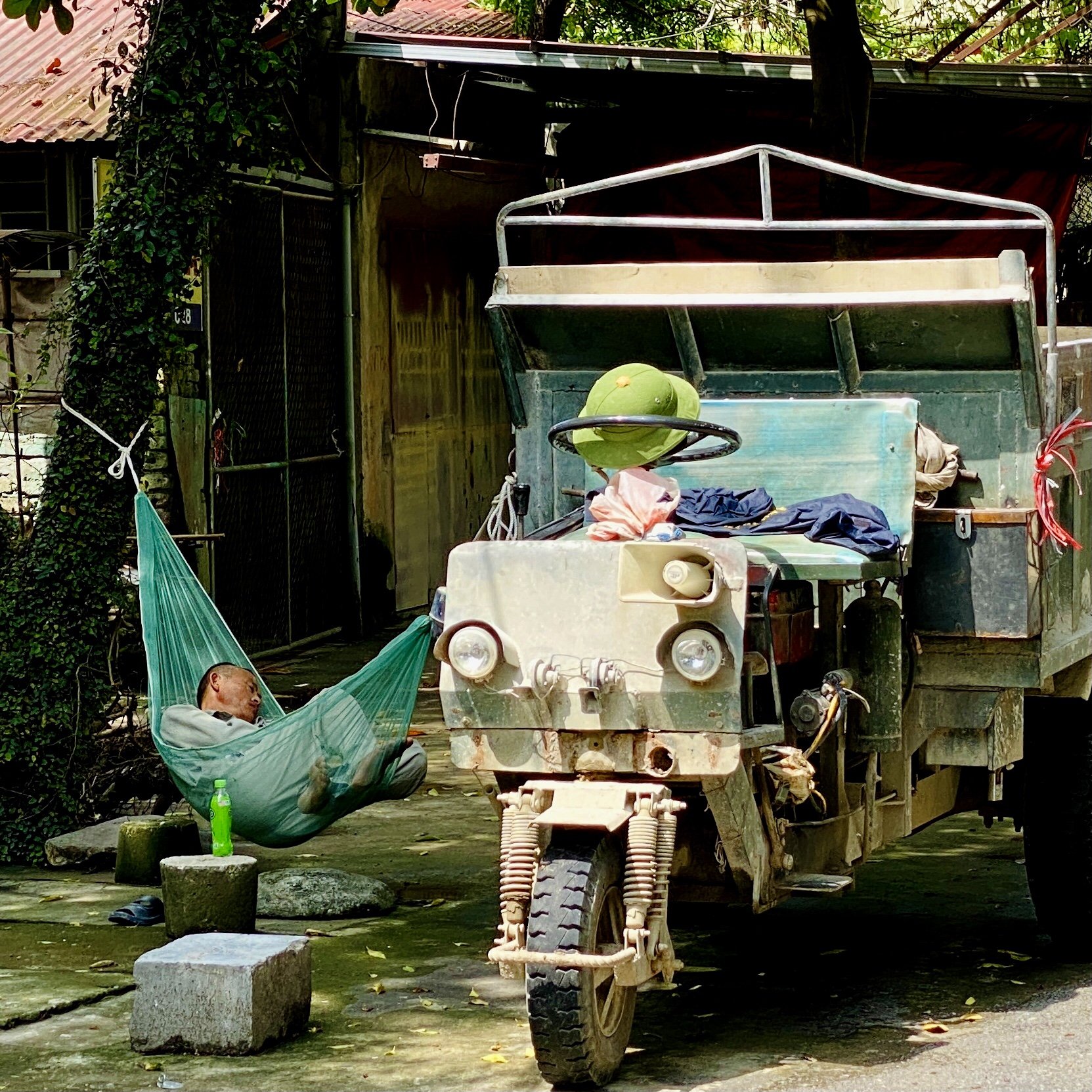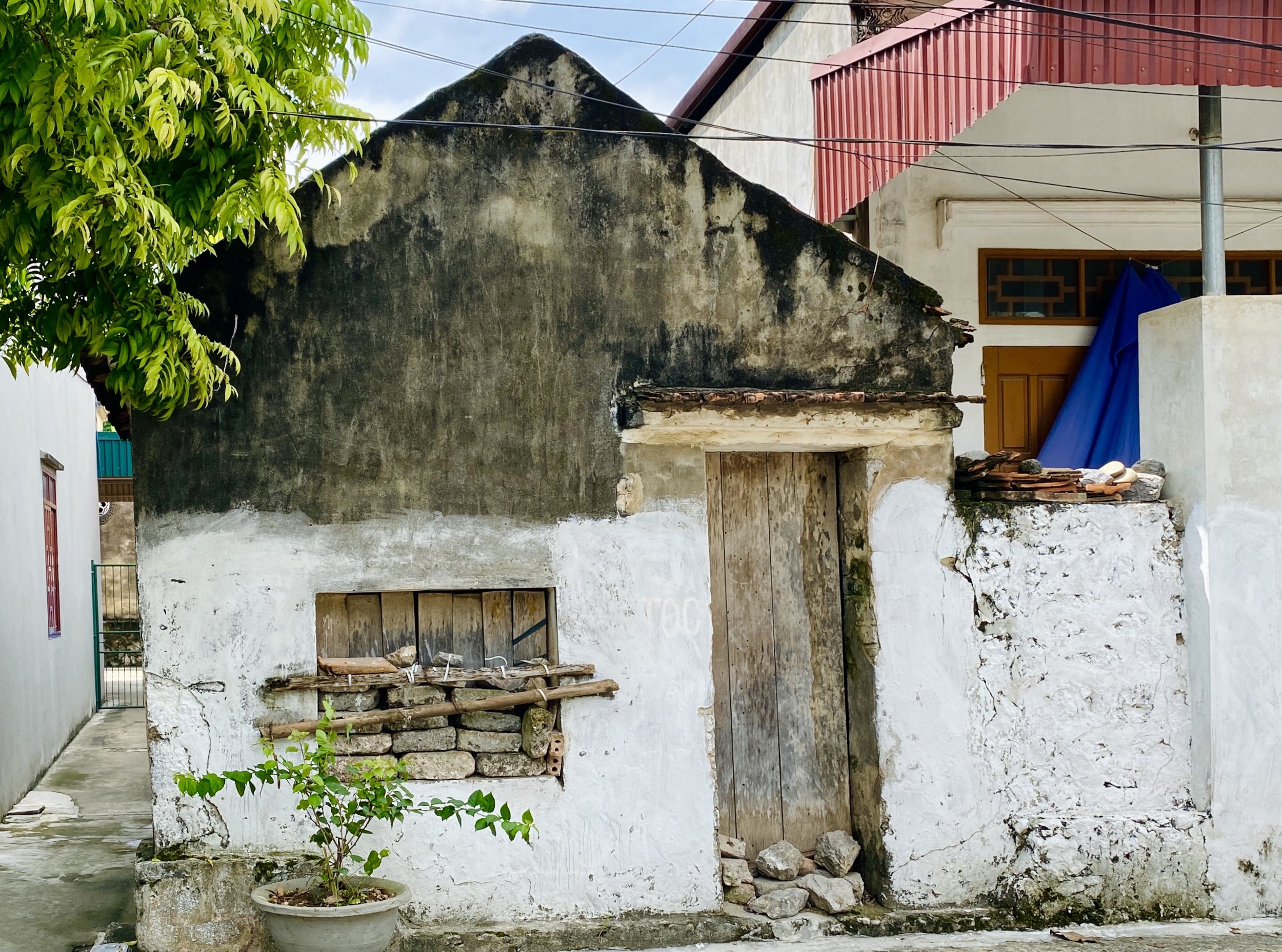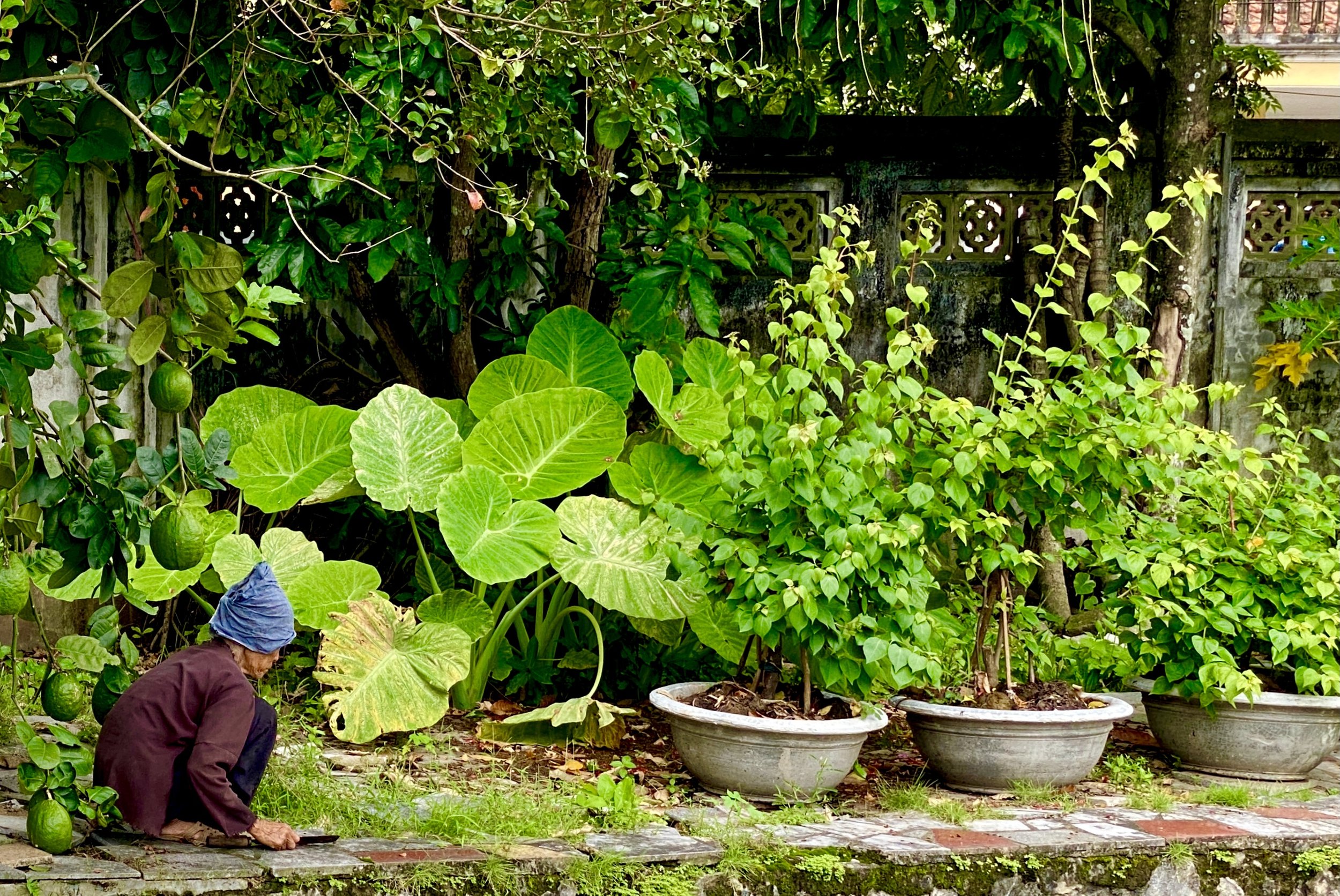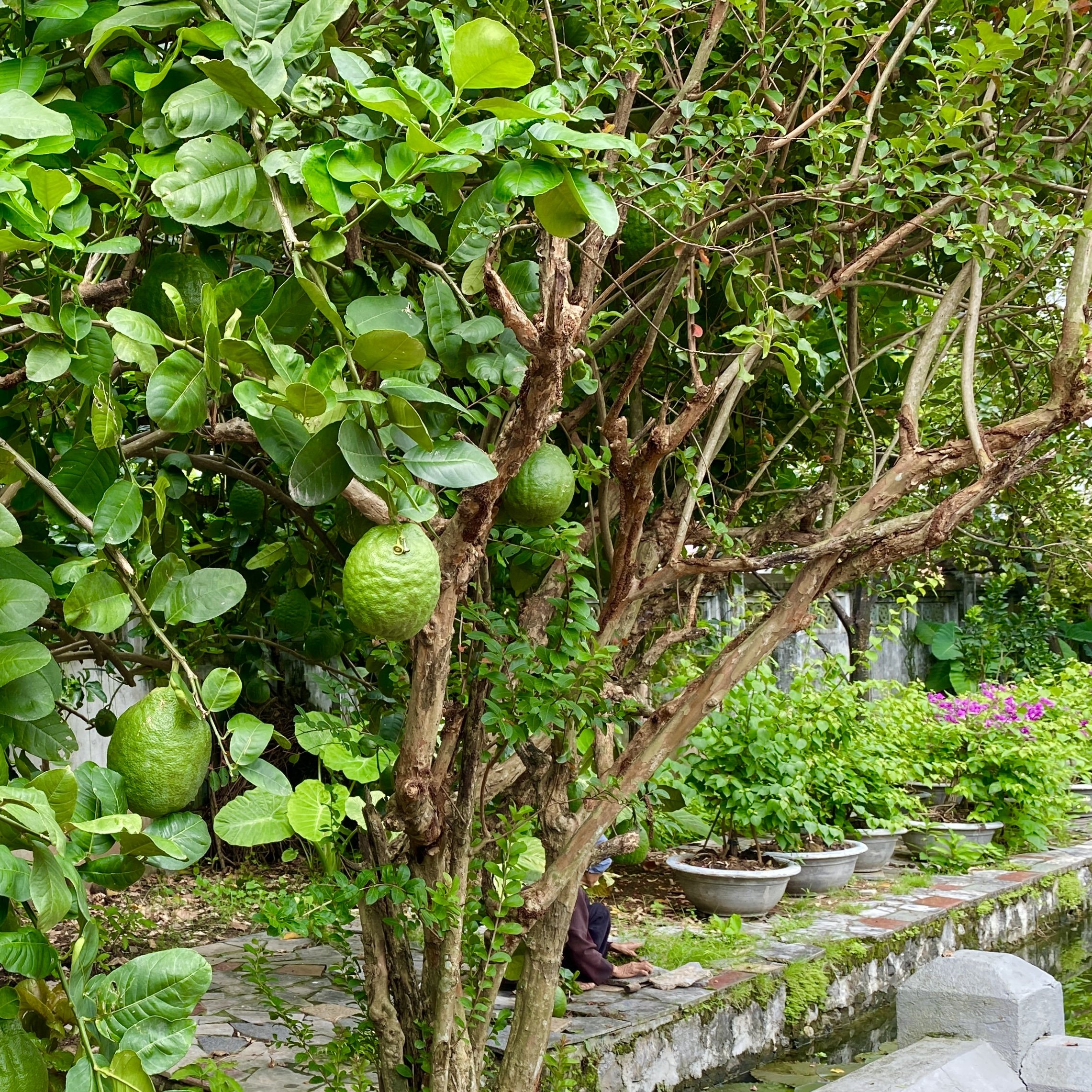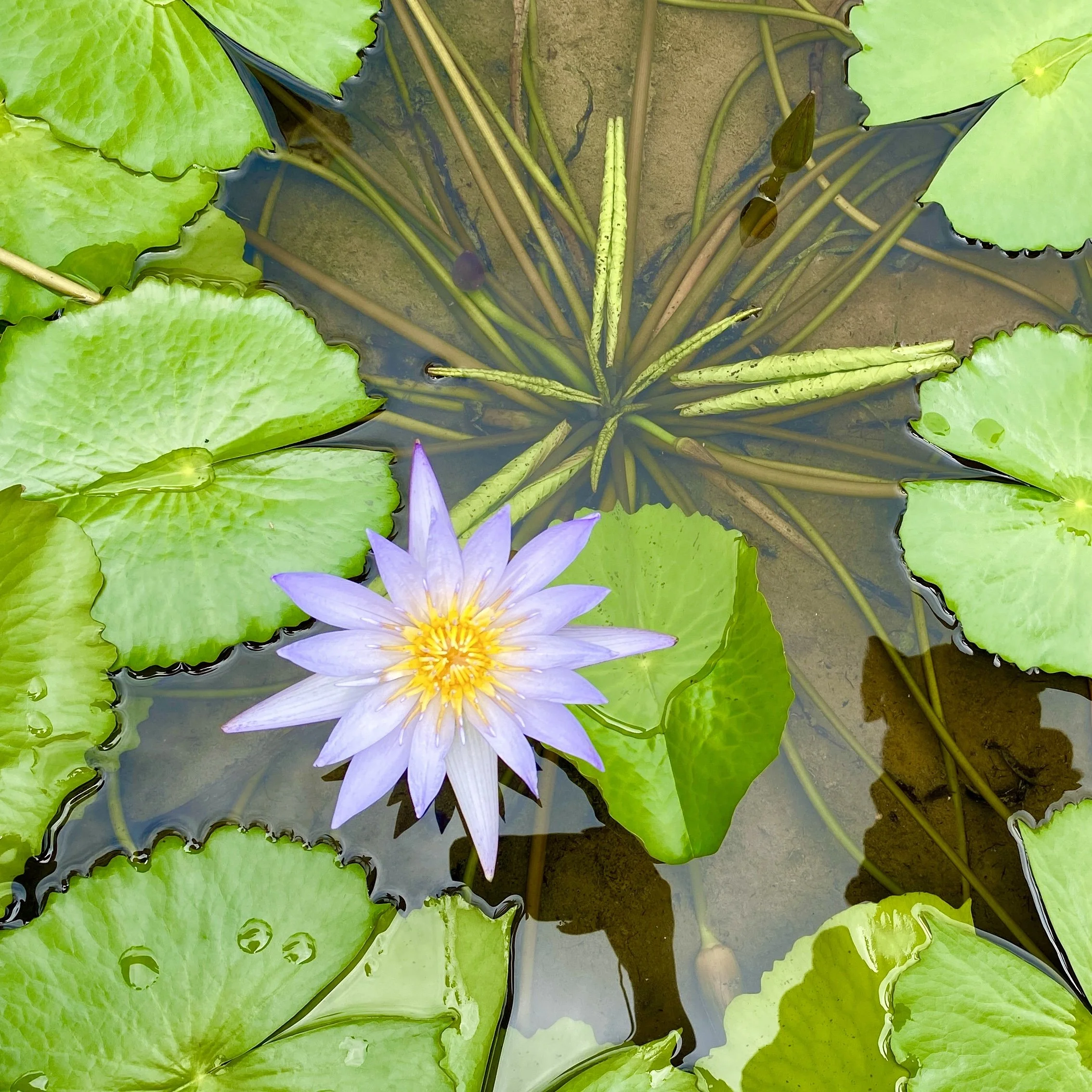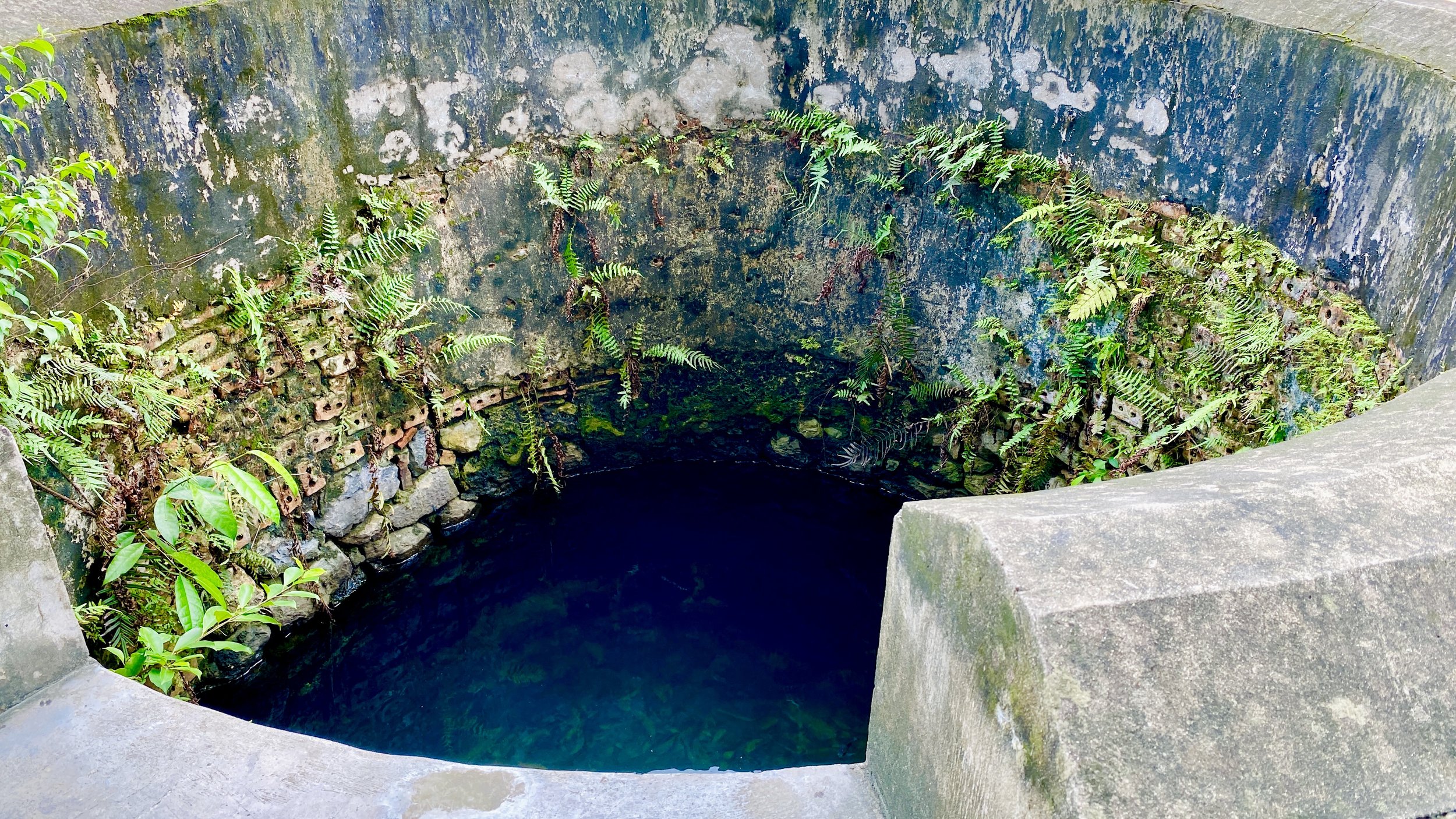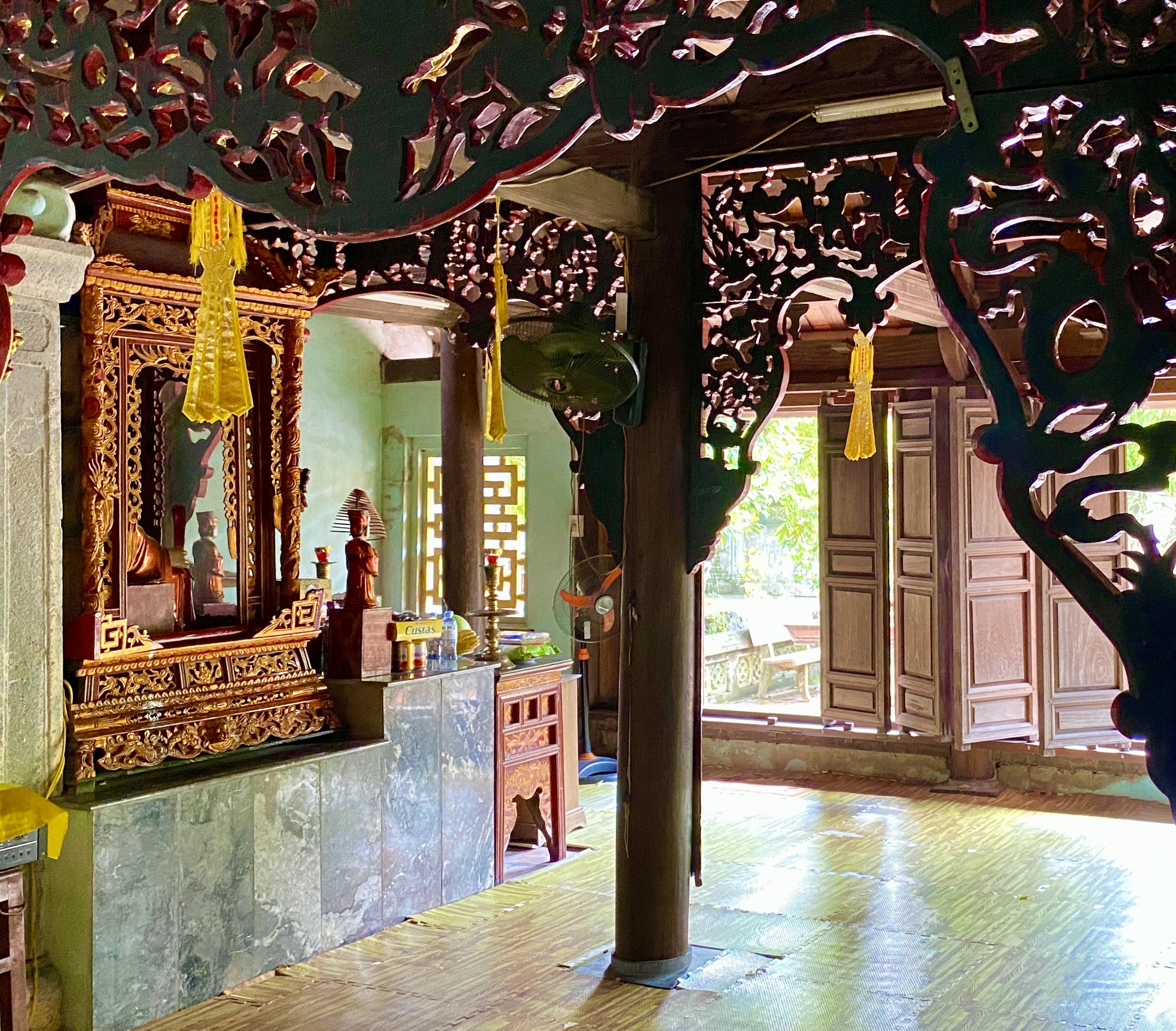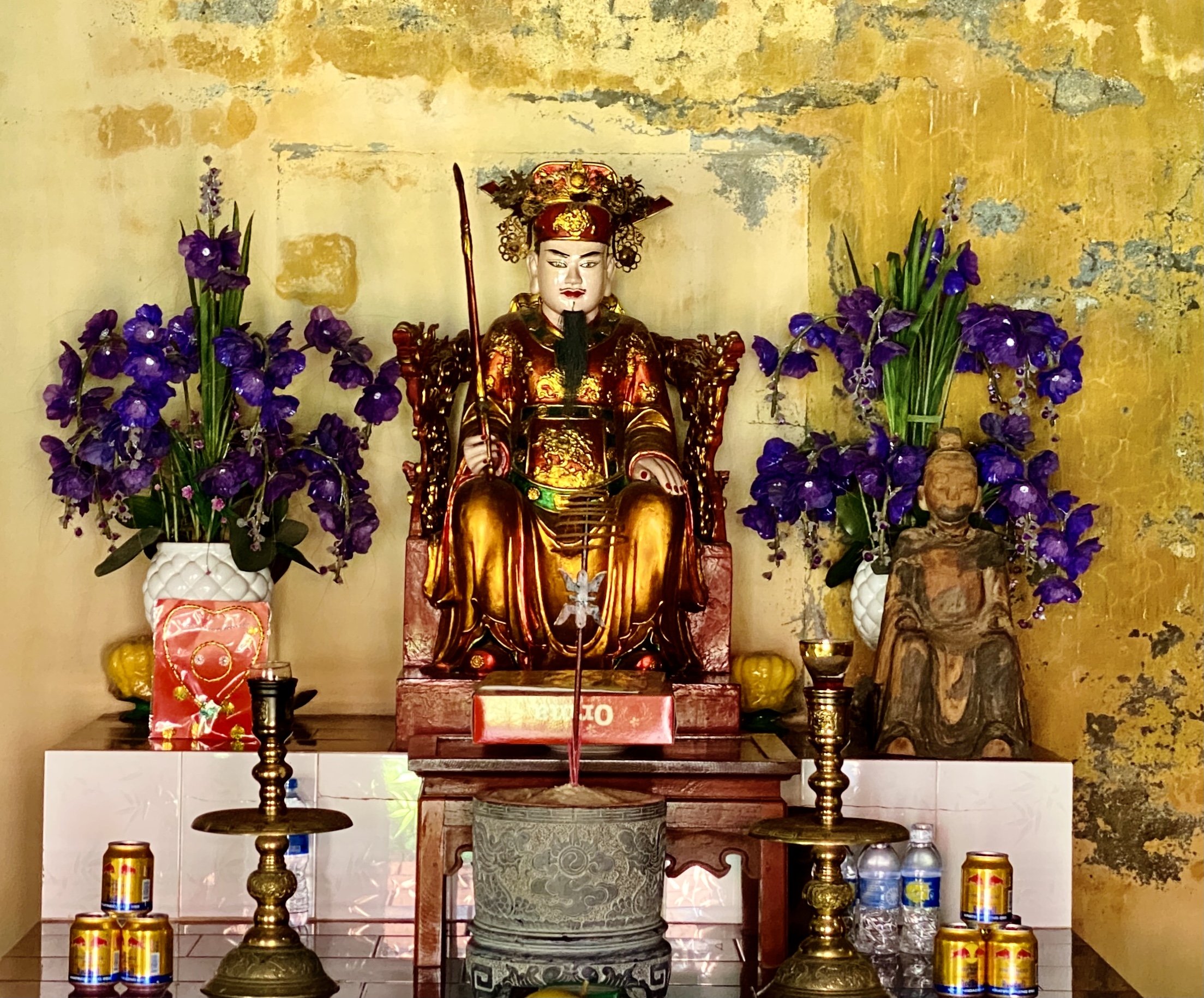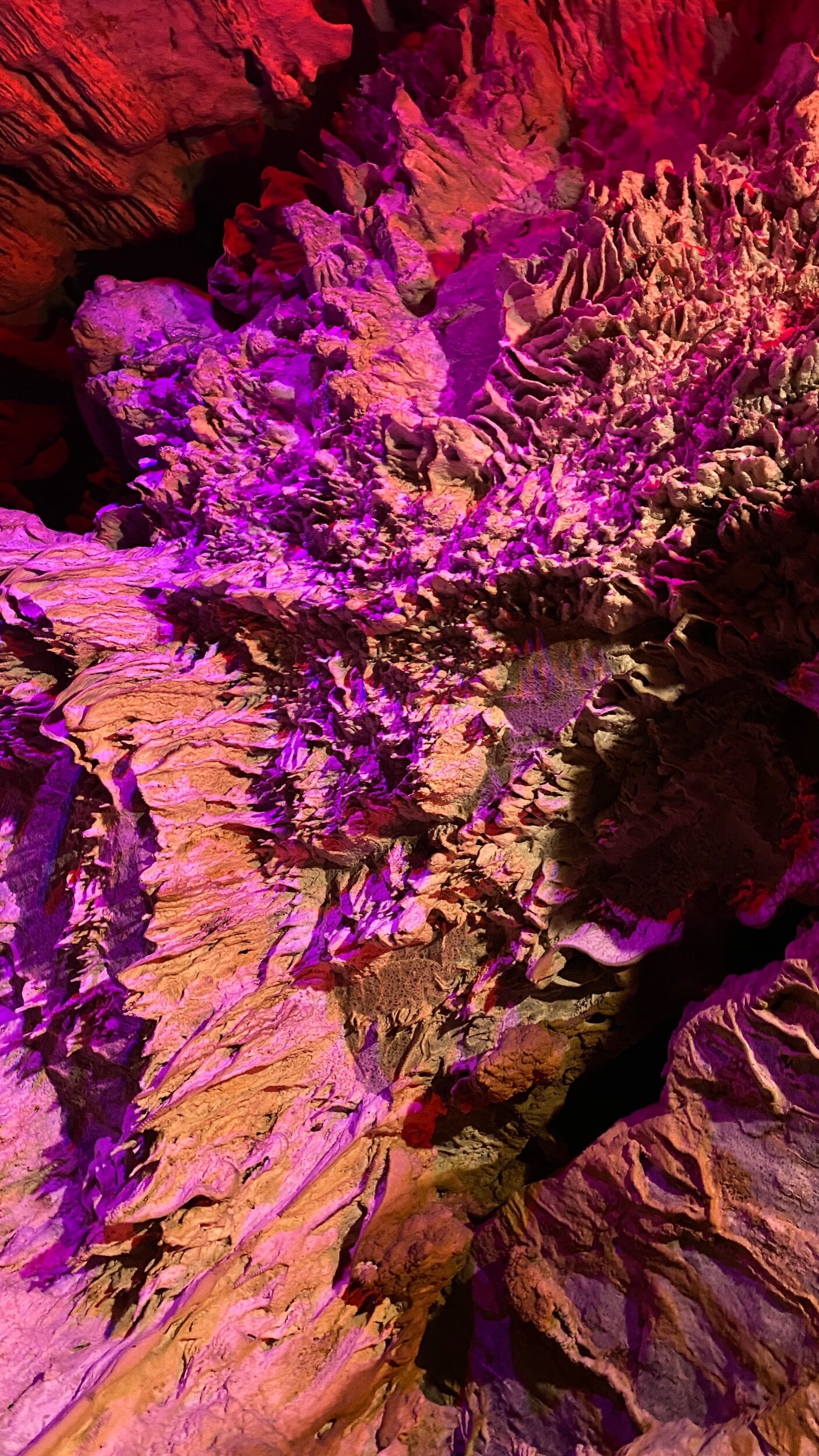I love seeing the sights everywhere I go, but in a place like Ninh Binh, it’s sometimes just as enjoyable to see the non-sights. A walk in the countryside is such a relief for mind and body.
Nhat Tru Pagoda, Ninh Binh | Vietnam
Walking through the gate from the Hoa Lu memorial temples into a small village, it’s only a few hundred feet before you hit Nhat Tru pagoda off to the right. The village itself itself is quite picturesque, though there are no amenities like convenience stores, and the odd old lady will attack you trying to sell incense or fans.
The temple consists of heavily renovated late 18th and early 19th century structures, respectfully built by the then-reigning Nguyen dynasty in the Dinh architectural style (what they believed 10th century structures would look like). In this style there are 5 main buildings: the Tien Duong (main lobby), Thuong Dien (Buddha Worship house), ancestor worship house, guest house, and tower (along with odd outbuildings for gardening and such).
The centerpiece of the temple is the ancient Buddhist pillar, erected in 995 by King Le Dai Hanh, and inscribed with the Surangama sutra. Notable for its rare lotus finial, the pillar is (dare I say) quite phallic; the main themes of the sutra are the impotence of dharma (righteousness) when unaccompanied by samadhi (the power of devotional trance) and the importance of confronting delusions in meditation.
There was actually a pagoda here prior to the erection of the pillar. After running away with a court official and regretfully returning, a Dinh princess was punished by being committed here as a nun. Upon her father’s assassination in 979, she committed suicide by throwing herself into the well (still in use) and there’s a small temple devoted to her in the complex also. How long does it take to carve a Buddhist pillar like this? 15 years? Could this possibly be an artifact of low-key sexist shade? I wonder if there was even a personal beef between them?
The last relic of interest here is the bronze temple bell cast in 1799. It is inscribed: “Do good and you will meet hundreds of good things … good people are always happy, this is the law of cause and effect “.
Hoa Lu Ancient Capital, Ninh Binh | Vietnam
The first independent (from the Southern Han Chinese) Vietnamese dynasty was founded by Đinh Bộ Lĩnh, the victorious warlord, in his hometown of Hoa Lư in 968. His dynasty only lasted 11 years; after he and his heir were murdered by a palace official, his most powerful military commander Lê Hoàn at first became regent to his remaining six year old son, but shortly dethroned the boy to rule as the first Early Lê dynasty emperor.
The Early Lê dynasty didn’t last much longer. Lê Hoàn ruled peacefully for 25 years, but his five sons warred over the throne for over a year after his death, massacring whole towns and murdering each other in the process. The eventual winner, Lê Long Đĩnh, was so notoriously debauched that he’s considered the Emperor Nero of Vietnam. Between his orgies and his hemorrhoids, he’s derisively referred to in ancient literature as ‘the emperor lying on the throne’ (as opposed to sitting on it). He mysteriously died after ruling for only 4 years; the high ranking mandarin and aristocrat who replaced him, Lý Công Uẩn, simply convinced the court to avoid any more Lê family infighting. Lý Công Uẩn founded the Lý dynasty in 1009, and moved the capital to what is now Hanoi, an auspicious site within a day’s ride of his own hometown.
So, Hoa Lu was only a preeminent city for 40 years. Modern structures have been built on the locations of the ancient buildings and tombs. There is nothing to be seen from the 10th or 11th centuries save a few artifacts in a small museum room in the Lê King temple. It is still a nice place to walk or relax for an hour or two. There is a local festival held to honor the ‘2 Kings’ in years ending in three, five, eight and zero, either on the 15th of the second lunar month (considered the birthday of Dinh Tien Hoang King) or on the eighth and thirteenth day of the lunar third month. I wasn’t there during the festival so it’s up to you to decode those dates and figure out if they’re worth timing your visit for!
Thung Nham Bird Sanctuary, Ninh Binh | Vietnam
Thung Nham Bird Sanctuary is just a 15 minute drive from Tam Coc village, and a very scenic/peaceful place for walking or biking. I visited one afternoon and barely saw any birds; I was told by other visitors they fly out in the mornings and come back around 5PM, so my timing was bad.
There is an entry fee; there’s also a “luxury hotel” in the middle of the park if you feel like paying $70+/night for the same scenery available elsewhere for $20. The park is more or less a single circuit; there are three caves at the beginning of the route; a lookout point and tiny island mid park, and a steep trail to an ancient tree about 3/4 of the way around. There are no guides.
The caves weren’t particularly scenic; one you practically have to crawl through, and another is lit throughout with irritating colored lights. The entrance to the trail towards the ancient tree isn’t clear; I couldn’t find it and there was no one to guide me so I didn’t see it. Unless they mean the giant banyan near the little temple?
I spent around 2 hours here, that’s how long it took me to wander around at a leisurely pace. It’s a nice half-day of exercise in nature, but not a must-see.
Bich Dong Pagoda, Ninh Binh | Vietnam
Bich Dong Pagoda dates from the 18th century, and features a pre-Nguyen dynasty architectural style. It’s built into a mountainside at three levels, and some shrines are inside dark caves. The steps make it easy to navigate and the views are beautiful; it was not possible for me to do them justice in photos because there’s a lot of greenery blocking them, the main perspective is almost straight up.
Word of warning: Tam Coc has the most aggressive hawkers I’ve encountered in Vietnam, and I’ve been here for two years now. The old women who sell fruit and souvenirs will literally run ahead of you and lock up the temples if you don’t buy from them. $2-6 is enough to pay for a folding fan and some bananas, come armed with small bills.
Tam Coc Boat Tour, Ninh Binh | Vietnam
The Tam Coc boat ride is the most popular in Ninh Binh, because one of the entry points is steps from Tam Coc’s main corner, where restaurants, hotels, minimarts etc. converge. It’s lovely, but shorter and not as interesting as the Trang An boat tour. Tam Coc is also known for having much more aggressive guides, who will essentially refuse to bring you back to shore unless you give them a $20 or $30ish tip on top of the ticket price. The ‘galaxy grotto’ is awful in my opinion; they’ve lit the cave with brightly colored lights, many flashing or swirling.
Múa Viewpoint, Ninh Binh | Vietnam
There’s not a lot to say about the Mua viewpoint, it’s just a beautiful view to reward you for about an hour and a half of exercise. It’s only accessible through the Hang Múa Ecolodge, and they charge you a couple bucks as an entrance fee. Once you’re in, they have various kiosks where you can buy drinks or ice cream, and little ponds and statue gardens where you can instagram it up, if that’s your thing.
Trang An Boat Tour, Ninh Binh | Vietnam
Though every village in Ninh Binh seems to have a boat tour, the best by far is the Trang An tour. There are 3 routes; all feature at least a couple caves and temples, and the beautiful mountain scenery of course. Each has its own merits. I chose Route 1, wanting to see the thousand year old temple. It’s so altered there’s nothing old there, so don’t expect much. Route 2 visits the King Kong movie set. They give you a map and time to choose when you buy the ticket, which is quite pricy.
An alternative to the boat tour is renting a kayak and going self-guided. I wish I had done this, because the guides don’t speak English and I didn’t learn anything, and was stuck on a boat with a woman who just wouldn’t shut up. I would have much preferred a few hours of exercise and some peaceful time in nature. There are so many professional guides rowing people around, a solo or duo kayaker could easily follow them along a route and not get lost.
There’s also a small museum in the ticket office with artifacts found in the area. It has some fossils, prehistoric stuff, bat trang pottery, etc.
Phát Diệm Cathedral | Vietnam
In The Quiet American (a book all expats in Vietnam are obligated to read, it seems), Graham Greene describes an early 1950s procession at Phát Diệm Cathedral:
“Past the white statue of the sacred heart that stood on an island in the little lake before the cathedral, under the bell tower with spreading oriental wings and into the carved wooden cathedral, with its gigantic pillars formed out of single trees, and the scarlet lacquerwork of the altar, more Buddhist than Christian . . .”
Thankfully, the cathedral wasn’t significantly damaged in the ensuing 20 years of war, and stands today exactly as described, a unique monument to Catholicism in Vietnam. Built between 1875 and 1899, one might assume the cathedral was constructed as part of French colonization efforts; in fact, it is entirely the work of an already long established local Catholic community.
Jesuit missionaries, primarily from Portugal and Japan, first built small communities of converts in North and Central Vietnam in the mid-16th century. Soon, French and Spanish Jesuit and Dominican missionaries entered the fray. By the early 1600s, Catholicism had gained enough of a foothold to make ‘toleration of Christianity’ a political issue. In 1630 Trịnh lord Trịnh Trang decreed from Đông Kinh that the French Jesuit mission (led by Father de Rhodes, the inventor of the modern Vietnamese alphabet using modified European letters) represented a threat to Vietnamese society, and expelled it from court and country (or Đàng Ngoài, at least). Throughout the north, Trịnh sanctioned pogroms in Catholic communities were regularly used to limit Catholic influence and expansion.
The Nguyễn lords in central and south Vietnam (Đàng Trong) were more tolerant of Catholic missionaries, because unlike the Trịnh (who purchased their artillery from Holland and England), they relied on Catholic Portugal to supply cannons. Nevertheless, ten thousand Catholics were martyred during the Tây Sơn rebellion (which temporarily bested both Trịnh and Nguyễn dynasties from 1778 to 1802). These local Catholics were both specifically targeted as traitorous collaborators with Nguyễn Ánh, and more broadly scapegoated as harbingers of Vietnamese colonization.
The Nguyễn dynasty relied on Catholic missionaries to arrange for European cannons and soldiers to put down the Tây Sơn rebellion, defeat the Trịnh, unify Vietnam, and conquer most of Cambodia. This was done by 1802, and as long as Nguyễn Ánh (installed in Huế as Emperor Gia Long) lived, Catholicism spread unchecked. At the time of his death in 1820, 4% of the Vietnamese population, including his firstborn son, had converted. However, Emperor Gia Long saw this tolerance as the repayment of a personal debt of gratitude, not a purposeful theological or philosophical expansion beyond Buddhism and Confucianism. So, he skipped over his firstborn to make a strictly Confucian and isolationist son, Minh Mạng, his successor.
Emperor Minh Mạng expelled and banned all missionaries just 5 years later, in 1825. He went as far as inspecting French merchant ships for non-sailors, banning French and Spanish interpreters from working, requiring all priests to gather at Đà Nẵng and henceforth depart, and executing those who would not. It’s important to note that these efforts weren’t specifically anti-French nor even particularly anti-Catholic, Minh Mạng simply shunned all Western influence and contact, also denying British and American overtures. Unlike his father, he preferred fighting Siam and Qing unaided to accepting foreign influence alongside foreign weapons.
It’s possible that Emperor Gia Long’s suspicions weren’t misplaced, or perhaps they acted solely out of desperation to survive, but in 1833 two thousand Vietnamese Catholic troops led by Father Nguyễn Văn Tâm rebelled against Minh Mạng, holding Saigon for two years while attempting to fight northwards and install Prince Cảnh (Gia Long’s firstborn) as a Catholic emperor. Though that particular effort failed, Vietnamese Catholics collaborated with French colonizers and fought against Nguyễn armies from the 1850s through the 1880s, and were rewarded with government jobs and formerly royal lands after France’s success.
Of course, just as the Nguyễn dynasty had come to perceive their Catholic allies as dangerous interlopers within a single generation, so did the French. This is the generation, from 1875 to 1899, when Phát Diệm Cathedral was constructed: when Vietnamese Catholics were still proudly reaping what they had sown, and only beginning to perceive their privilege would not outlive their usefulness. Though European elements were inevitably incorporated, the architecture here was never intended to imitate foreign churches, and the bishops here were never foreign born.
A Catholic never gained the Annamite throne; the French considered it more useful for the puppet emperors to remain Buddhist and Confucian, thereby appeasing the majority of Vietnamese. And France itself had just buried its last monarch (the defeated and exiled Napoléon III) in 1873, finally and permanently transitioning to Republicanism.
The nun who showed me around was a young woman named Rose, and she was earnest in her beliefs, an intellectual, eager to learn the English names for everything (I supplied ‘sacred heart’, ‘immaculate heart of Mary’, ‘order of nuns’, and ‘stations of the cross’, among others I forget). She hoped to eventually be deployed to Europe or America or elsewhere she could see our cathedrals and hear our masses. She showed me how to ring their bell, which doesn’t have ropes; you strike it on one side with a wooden log in the manner of Buddhist temple bells. She showed me how the columns of the church were made of massive ironwood trees, in the manner of Vietnamese traditional houses; how the gongs are sounded to begin processions (where in the West, a table bell serves); how the angels’ faces had been carved and painted to reflect the local Catholic population at the time: 11 cherubim with Asian features, one with European.
The priest who oversaw the cathedral’s construction is buried in its courtyard, with a carved stone dragon bed fronting his grave in the manner of Vietnamese emperors. The clouds painted on the ceiling are in the Asian curlicue style; the prayers overheard from the chapels are loud, uniform, continuous and monotone chants in the Buddhist manner, not the singsong intermittent mumbles of the West. In the West, three doors on the front of a church are for the convenience of getting people into the building, nothing more; here they are made in the Confucian tradition, so scholars can enter on the left, military men on the right; or women on the left and men on the right; or students on the left, teachers on the right, etc. The more you know about both temple and church architecture, the better you can appreciate the incredibly special blend of this place.
Part of the Kim Sơn rural coast district, Phát Diệm is approximately a 45 minute drive from Ninh Binh city (about $20 on Grab) and so worth it. If you have some hours to explore, the village has several small old churches and restaurants serving local seafood specialties.



